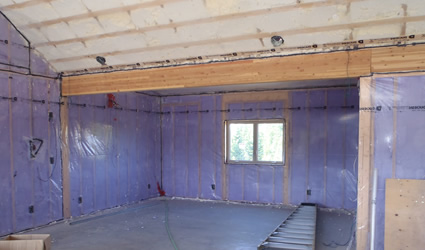Non-insulated or poorly insulated attics are a major source of heat loss. They can account for as much as 30% of your homes energy loss. Furthermore a poorly insulated attic will cause moisture problems in the attic as the warm air escapes your home and comes into contact with cold air in the attic or vice versa. This will cause condensation to form on your roof deck in your attic and lead to the development and growth of mold. This is entirely preventable as attics are often the easiest and cheapest areas of your home to properly insulate, even after your house is built and you live in. If you are unsure how well your attic is insulated you should contact us for a free evaluation and we can provide you with an estimate and some free advice on how to go about increasing the insulation in your attic.
Their are multiple ways to insulate your attic and all have varying costs and benefits. For the utmost energy efficiency spray foam is by far the most effective way to insulate your ceiling, but it is also quite expensive. The reason is because the fibre based insulations get cheaper in the attic even though the R-values increase. R50 fibreglass can be installed in your attic at a lower cost than R20 fibreglass can be installed in your walls because it is a cheaper version of the product. With spray foam the product installed in the attic is the exact same as the product installed in the walls however you need more of it to reach the desired level of insulation thus the price increases substantially.
Other than energy efficiency spray foam does address important short-comings in attic insulation especially in architecturally designed homes with complicated ceilings, bonus room ceilings without enough room to reach the required R-value with fibreglass or flat ceilings with minimum venting space.

